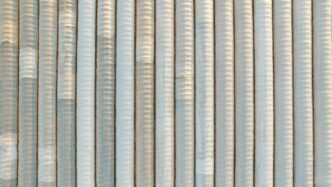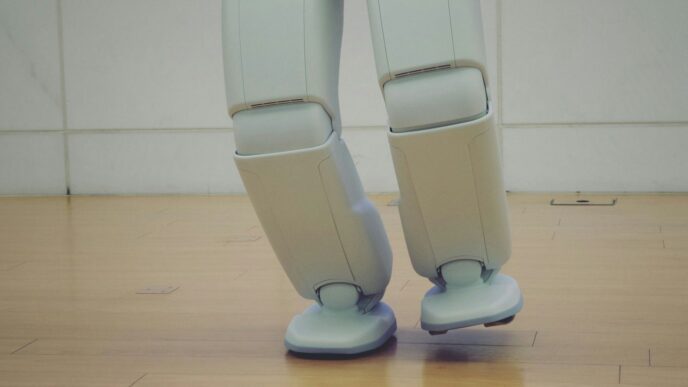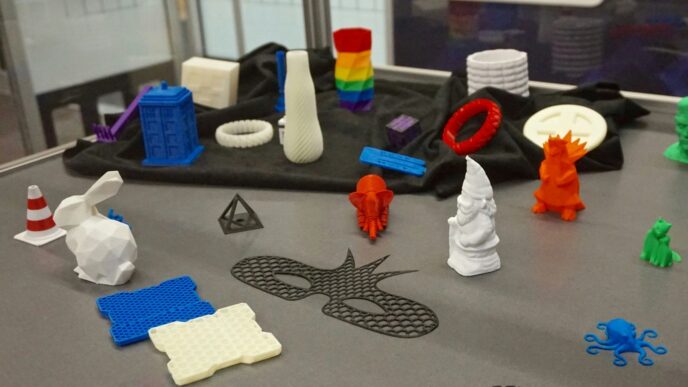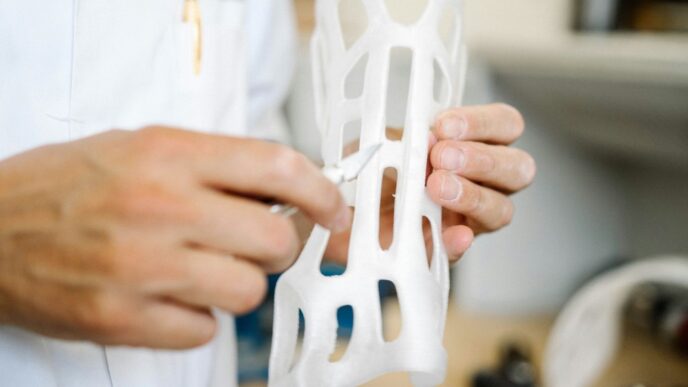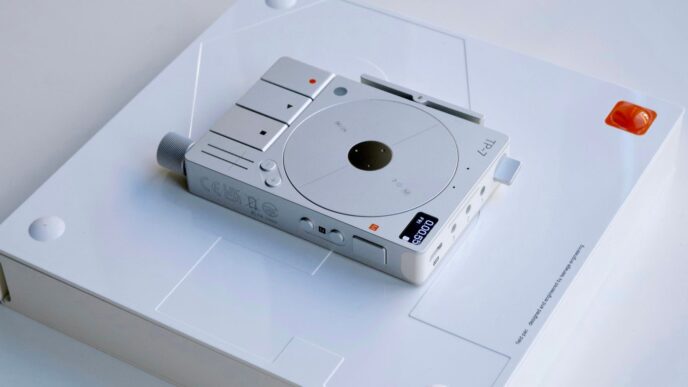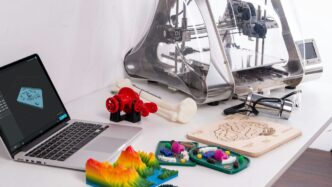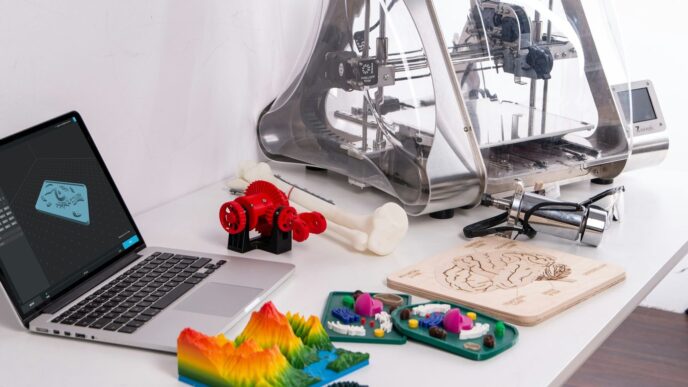Farming is changing, and fast. We’re talking about agriculture in greenhouse settings, which is a big deal. Gone are the days of just planting seeds and hoping for the best. Now, we’ve got tech that makes growing food way more efficient and, honestly, a lot smarter. This shift is all about making sure we can feed everyone, while also being kinder to the planet. Let’s look at how this is all happening.
Key Takeaways
- Traditional farming faces issues like unpredictable weather and resource waste, pushing the need for better methods.
- Greenhouse agriculture uses tech like precision farming and AI to manage crops more effectively, boosting yields.
- Drones and robotics are becoming common tools, helping with tasks from monitoring to harvesting.
- The benefits include growing more food with fewer resources, saving money, and producing higher quality crops.
- The future of farming in greenhouses involves more advanced robots and AI for even smarter, data-driven growing.
Understanding The Shift To Greenhouse Agriculture
Farming, as we know it, has been around for ages, but lately, it feels like we’re hitting some serious walls. Traditional methods, while they’ve fed us for generations, are really struggling to keep up with today’s demands and challenges. Think about it: unpredictable weather, dwindling resources, and a growing population all put a huge strain on how we grow our food.
Challenges In Traditional Farming
One of the biggest headaches is how much we rely on nature’s whims. A bad drought or a sudden flood can wipe out an entire season’s work. Plus, we’re often using water and fertilizers without really knowing if the plants need them, which is a waste and can mess up the environment. Many farms, especially smaller ones, also find it tough to afford the latest tech, so they’re stuck using older ways that just aren’t as efficient. It’s like trying to win a race with a bicycle when everyone else has a sports car.
The Need For Smarter Agricultural Practices
Because of these issues, there’s a clear push for farming that’s more controlled and uses resources better. We need ways to grow food that aren’t so dependent on the weather and can produce more with less. This is where thinking smarter about how we manage crops comes in. It’s not just about planting seeds; it’s about using data and technology to make sure every plant gets exactly what it needs to thrive.
Revolutionizing Crop Management
This shift means we’re moving towards practices that give us a much tighter grip on the growing process. Instead of just hoping for the best, we’re actively managing things like temperature, humidity, and nutrient delivery. This controlled approach helps prevent crop loss from pests or diseases and allows for year-round production, regardless of what’s happening outside. It’s about taking the guesswork out of farming and replacing it with precision.
Key Technologies Driving Greenhouse Advancement
So, how are we actually making these greenhouses smarter and more productive? It’s all about the tech. We’re seeing a bunch of cool tools and systems come into play that are changing the game.
Precision Farming For Optimized Yields
Think of precision farming as giving your crops exactly what they need, when they need it. Instead of treating a whole field the same, we’re using data to figure out the best approach for smaller sections, or even individual plants. This means using sensors to check soil moisture, nutrient levels, and even light. Then, systems can automatically adjust watering or fertilizer delivery. This data-driven approach helps cut down on waste and makes sure plants grow as well as they possibly can. It’s like having a super-attentive gardener for every single plant.
Drones And Aerial Imaging In Controlled Environments
Even inside a greenhouse, drones can be surprisingly useful. Small, specialized drones can fly through the growing areas to get a bird’s-eye view. They can carry cameras that spot problems early, like signs of disease or nutrient deficiencies, long before a person might notice them. They can also help map out the greenhouse space, track plant growth over time, and even help with tasks like pollinating or applying treatments precisely where needed. It’s a way to get a consistent, detailed look at everything without having to manually inspect every single plant.
Artificial Intelligence For Predictive Insights
Artificial intelligence, or AI, is like the brain behind all this new technology. It can look at all the data coming from sensors, drones, and other systems and find patterns we might miss. For example, AI can predict when a crop might be ready for harvest, or even forecast potential disease outbreaks based on environmental conditions and plant health. This lets growers make smarter decisions ahead of time, rather than just reacting to problems. It helps optimize planting schedules, manage resources better, and generally make the whole operation run more smoothly.
Automation And Robotics In Greenhouse Operations
This is where things get really futuristic. Automation and robotics are taking over some of the more repetitive or labor-intensive tasks. We’re talking about robots that can transplant seedlings, monitor plant health, and even harvest ripe produce. These machines can work tirelessly and with a high degree of accuracy. For instance, robotic harvesters can be programmed to pick delicate fruits without damaging them, which is a huge help, especially when labor can be hard to find. It’s all about making the greenhouse more efficient and less reliant on manual work for certain jobs.
Benefits Of Embracing Greenhouse Technology

Switching to greenhouse farming isn’t just a trend; it’s a smart move that brings a whole lot of good things to the table. Think about it: you get more done with less effort, you’re kinder to the planet, and you can actually save money in the long run. Plus, the produce you grow? It’s usually top-notch.
Enhanced Efficiency and Productivity
Greenhouses let you control the environment, which means you’re not at the mercy of unpredictable weather. This control translates directly into getting more crops grown, faster. You can plant more often, and your plants grow more consistently because they have just the right amount of light, water, and nutrients. It’s like giving your plants a perfect, year-round vacation.
- Consistent Growing Conditions: No more worrying about frost, heatwaves, or sudden downpours ruining your harvest.
- Optimized Resource Use: Water and fertilizers are delivered precisely where and when they’re needed, cutting down on waste.
- Extended Growing Seasons: You can grow crops for longer periods, sometimes even year-round, leading to more harvests.
Achieving Greater Sustainability
Sustainability is a big deal these days, and greenhouses really help with that. By using resources like water and nutrients more carefully, you reduce the environmental footprint of your farm. Less runoff means less pollution, and precise application of fertilizers means less excess chemicals in the soil and water. It’s about growing food responsibly.
| Resource | Traditional Farming (Approx.) | Greenhouse Farming (Approx.) | Reduction |
|---|---|---|---|
| Water Usage | 100% | 60-70% | 30-40% |
| Fertilizer Use | 100% | 70-80% | 20-30% |
Significant Cost Savings For Growers
While setting up a greenhouse might seem like a big upfront cost, it often pays off over time. Think about the money saved by not losing crops to bad weather, using fewer resources like water and pesticides, and needing less labor for certain tasks due to automation. Over the years, these savings add up, making greenhouse farming a more profitable venture.
- Reduced Crop Loss: Protecting crops from pests and weather means fewer losses and more predictable income.
- Lower Input Costs: Efficient use of water, fertilizer, and pesticides cuts down on recurring expenses.
- Labor Efficiency: Automation can handle repetitive tasks, freeing up workers for more skilled jobs and reducing overall labor needs.
Improved Crop Quality and Yield
When plants are grown in a controlled environment, they tend to be healthier and produce better quality fruits and vegetables. The consistent conditions mean plants can focus their energy on growing and producing, leading to higher yields and produce that looks and tastes great. Consumers notice the difference, and that can lead to better market prices for growers.
Real-World Applications In Modern Greenhouses
It’s pretty amazing to see how far greenhouse farming has come, right? We’re not just talking about simple glass boxes anymore. These modern setups are packed with tech that’s changing how we grow food.
Automated Harvesting Solutions
Remember when harvesting was all about people out in the fields? Well, that’s changing fast. Companies are now using robots to pick things like tomatoes. Nature Fresh Farms, for example, has put in systems that use robots and AI to keep up with orders. This really helps when finding enough workers is tough. It means more food can get to us without all the usual headaches.
AI-Driven Pest and Disease Management
Dealing with pests and diseases used to be a bit of a guessing game, or at least a lot of spraying. Now, AI is stepping in. Researchers have developed systems that can look at images of plants, even just a leaf, and figure out if there’s a problem. Some systems can spot diseases with over 97% accuracy. This means farmers can target treatments right where they’re needed, using less pesticide overall. It’s smarter for the plants and better for the environment.
IoT-Enabled Smart Greenhouse Systems
Think of your greenhouse talking to you – that’s kind of what IoT (Internet of Things) does. Sensors are placed everywhere, checking temperature, humidity, and how wet the soil is. All this information gets sent to a central system, sometimes even to an app on your phone. This lets growers keep a close eye on everything and make adjustments quickly. For instance, Dusun IoT has systems that help increase how much food can be grown and how efficiently. Even smaller setups, like GreenLab’s, use IoT to manage energy use, making sure things run smoothly even when it’s dark or cloudy.
Robotics For Precision Tasks
Beyond just harvesting, robots are getting involved in other specific jobs too. We’re seeing robots that can carefully apply treatments only to the spots that need it, like targeting weeds with spray. This precision is a big deal. It cuts down on waste and makes sure the plants get exactly what they need, when they need it. It’s like having a super-attentive farmhand who never gets tired and can do the most detailed work.
The Future Landscape Of Greenhouse Farming

So, what’s next for growing food indoors? It’s pretty exciting, honestly. We’re looking at a future where farms are even smarter and more automated than they are now. Think about machines that can do almost everything, guided by super-smart computer brains.
Advancements in Robotics and Autonomous Machinery
Robots are going to become even more common. We’re talking about machines that can handle delicate tasks like picking ripe strawberries or even planting tiny seeds with incredible accuracy. These aren’t just clunky machines anymore; they’re getting really good at what they do. Autonomous tractors might even start doing their thing in larger greenhouse setups, working tirelessly without needing a human driver. This means less manual work, which is a big deal when finding farm labor can be tough.
Predictive Analytics With AI Integration
Artificial intelligence is going to be like the farm’s crystal ball. By looking at tons of data – like weather patterns, plant health readings from sensors, and even historical growth data – AI can help predict exactly when crops will be ready to harvest, if a disease might pop up, or what the best time to plant is. This kind of foresight means farmers can make better choices, use resources more wisely, and avoid costly mistakes. It’s all about making smarter decisions before problems even start.
Smart Farming and Enhanced IoT Connectivity
Everything in the greenhouse will be connected. The Internet of Things (IoT) means sensors, cameras, and machines will all talk to each other and to the farmer’s computer or phone. Imagine getting an alert that the humidity is a bit too high in one section, and the system automatically adjusts the ventilation. Or sensors telling you exactly how much water each plant needs. This constant stream of information allows for really fine-tuned control over the growing environment. This interconnectedness is key to maximizing efficiency and minimizing waste in future greenhouses.
Here’s a quick look at what this connected future might involve:
- Automated Environmental Controls: Systems that adjust temperature, humidity, and light automatically based on real-time data.
- Robotic Task Management: Robots performing tasks like nutrient delivery, pruning, and harvesting based on AI recommendations.
- Data-Driven Decision Support: Dashboards and alerts providing farmers with actionable insights for crop management and operational adjustments.
- Remote Monitoring and Control: The ability to oversee and manage greenhouse operations from anywhere, anytime.
Wrapping It Up
So, we’ve looked at how technology is really changing the game for farming. It’s not just about fancy gadgets; it’s about growing more food, using fewer resources, and doing it in a way that’s better for the planet. From smart sensors telling us exactly when and where to water, to robots helping out with the heavy lifting, these tools are making farming more efficient and less wasteful. It’s pretty clear that the future of how we feed ourselves involves a lot more tech, and honestly, that’s a good thing for everyone.
Frequently Asked Questions
What exactly is greenhouse farming, and why is it becoming so popular?
Greenhouse farming is like growing plants inside a special glass or plastic house. This setup lets farmers control things like temperature, light, and water really well. It’s getting popular because it helps grow more food, more often, and with fewer problems than farming out in the open fields, even when the weather is bad.
How does technology help make greenhouse farming better?
Technology is like a super-helper for greenhouses! Think of smart sensors that tell you exactly when plants need water or special food. Robots can help plant seeds or pick ripe veggies. Computers can even predict problems like pests before they get bad. All this helps grow more food with less effort and waste.
Is greenhouse farming better for the environment?
Yes, it can be! Because farmers can control everything inside, they use just the right amount of water and fertilizer. This means less waste and less pollution going into the ground or water. Plus, growing food closer to where people live can mean less transportation, which is good for the air.
Can technology help save money for farmers?
Definitely. While setting up some of these high-tech systems can cost money at first, they often save farmers money in the long run. Using water and fertilizer wisely means spending less on those. Robots can do the work of many people, and growing more food means more sales. It’s about working smarter, not just harder.
What kind of crops grow best in these high-tech greenhouses?
Lots of different things! Many fruits and vegetables, like tomatoes, peppers, cucumbers, and leafy greens, do really well. It’s also great for growing delicate plants or crops that need very specific conditions. The goal is to grow healthy, tasty food all year round.
What’s the future of farming with all this new technology?
The future looks really exciting! We’ll likely see even smarter robots that can do more complex jobs, like harvesting different kinds of crops. Artificial intelligence will get even better at predicting what plants need and warning about problems. It all points to growing even more food in a way that’s good for people and the planet.

